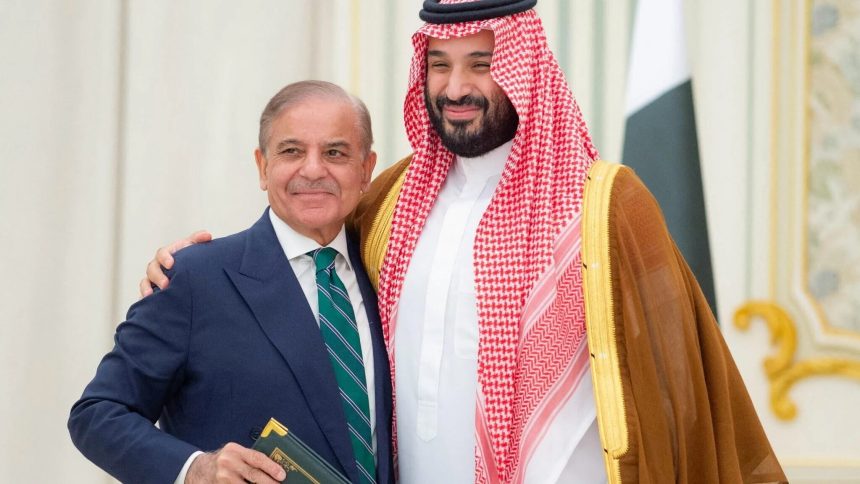What Did the Pact Say
On 17 September 2025, Saudi Arabia and Pakistan formalised a “Strategic Mutual Defence Agreement” in Riyadh. Under its provisions:
- An attack on one country is “considered an aggression against both.”
- The countries will enhance defence cooperation, joint deterrence, intelligence sharing, and military coordination.
- High-level leaders were present at the signing: Saudi Crown Prince Mohammed bin Salman and Pakistani Prime Minister Shehbaz Sharif. Pakistan’s military leadership also attended.
When It Happened & under What Conditions
The agreement was signed during Pakistan PM Shehbaz Sharif’s state visit to Saudi Arabia, at the invitation of Crown Prince Mohammed bin Salman. The timing comes against a backdrop of rising regional tensions, notably after an Israeli airstrike in Doha (Qatar) targeting Hamas leaders, which alarmed Gulf Arab nations about security vulnerabilities.
Why It Matters: Regional Implications
- Signal About U.S. Dependability
Gulf states have long relied on the U.S. for their security guarantees. The Saudi-Pakistan pact appears to reflect growing unease among Gulf Arab states about U.S. reliability; some see the deal as diversifying security partnerships. - Pakistan’s Strategic Role and Nuclear Dimension
Because Pakistan is a nuclear-armed state, this agreement raises questions about whether its nuclear capabilities might factor into deterrence. While the pact does not explicitly state “nuclear umbrella,” officials have suggested that all military means will be considered depending on the threat. - Effects on India
India has taken note of the agreement, seeing it as potentially changing the balance of regional security. Indian officials have expressed concern and said they will scrutinise what this means for their own national security. - Impact on Gulf Geopolitics
The pact adds to an emerging trend of Gulf countries recalibrating alliances. Saudi Arabia is showing it is willing to formalise defense ties beyond its traditional models and potentially chart more independent security strategies. - Deterrence and Military Cooperation
The agreement is intended to strengthen joint deterrence to external threats, improve military cooperation, and likely includes shared intelligence and joint drills. These steps may enhance both countries’ readiness and regional posture.
Concerns & Unresolved Questions
- Clarity on Scope: The exact limits of “aggression” aren’t fully spelled out. What counts as aggression, who decides, and what form a response might take are all open ends.
- Nuclear Commitment Ambiguity: While Pakistan has nuclear deterrent capability, whether Saudi Arabia would formally be under any protective umbrella (or whether that’s just rhetorical) is not confirmed.
- Reactions from Other Powers: The U.S., China, Iran, and India will likely react. Especially India, given its own tensions with Pakistan, may see this as a shift. Also, how the U.S. views this changing alignment will be important.
- Implementation Logistics: Beyond signing, how the agreement will be operationalised—joint exercises, command structures, logistics, rules of engagement—remains to be seen.
What Comes Next
- Pakistan and Saudi Arabia will likely begin work to build the structures this agreement requires: military planning, intelligence sharing, joint operations or exercises.
- Diplomatic ripple effects: neighbours (India, Iran, Gulf neighbours) will respond, possibly recalibrating their plans or alliances.
- Monitoring by international observers and the U.S.: given existing agreements and security guarantees, this pact could shift regional dynamics in unpredictable ways.











